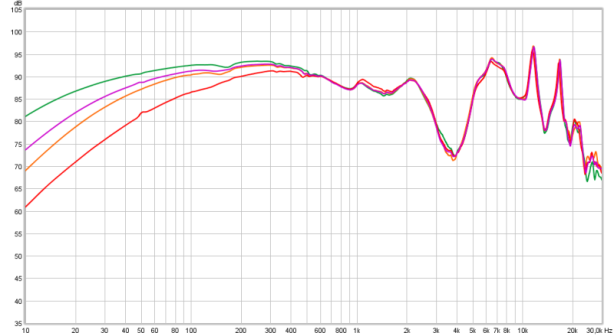solderdude
Grand Contributor
When using a HATS I would probably use Harman target in favor of both other corrections which are only suited for speakers. When using Harman target it is essential to use the same HATS.
Tyll visited there and compared his measurements to those of Harman. Tyll used the wrong correction from day one as he was ill advised by the guy that installed it. By the time he found out he already had so much measurements that he would have to do all his pdfs over again.
He even made some 'Harman corrected plots' which were better at representing tonal balance to how they are perceived but still 'off'.
Headroom uses Tyll's data and handled it better and gave the viewer options to choose correction or raw measurements which I think is the way to go.
Both Rtings and Sonarworks made their own curve. There is something to be said for this and Sonarworks his correction seems pertty good to me.
The plots of Rtings aren't far off either.
With Rtings the only debatable stuff is the way they rate/rank headphones. I have discussed this with them a few times (so have others) which resulted in different ratings for different applications.
Still, the website is called Rtings and primarily is about monitors and TV screens which are easy to rate objectively.
As they also were interested in headphones they started measuring them too and deliberately left out the listening part (not completely though, they do add some comments)
They insist they should rate based on numbers only and are still working on refining them and now and then re-measure stuff.
It is still a work in progress as it were.
I don't agree with the ratings based on how I think they sound. There is discrepancy between measured numbers and perceived SQ for sure.
There is discrepancy between how Tyll heard some headphones and how I do as well.
Harman correlates to sound, Rtings to numbers. There is a difference.
Sonarworks also correlates to sound (and uses measurements) but the amount and type of people that compare the sound is much smaller in numbers and use studio engineer types to determine what sounds closest to their monitors.
Harman uses averages of very large test populations.
I am curious to see what Amir comes up with and what he will measure and how it is displayed.
I really liked the 'sliders' from GE they were always pretty correct IMO.

(The above is from the HD650 which many hear know well)
Tyll visited there and compared his measurements to those of Harman. Tyll used the wrong correction from day one as he was ill advised by the guy that installed it. By the time he found out he already had so much measurements that he would have to do all his pdfs over again.
He even made some 'Harman corrected plots' which were better at representing tonal balance to how they are perceived but still 'off'.
Headroom uses Tyll's data and handled it better and gave the viewer options to choose correction or raw measurements which I think is the way to go.
Both Rtings and Sonarworks made their own curve. There is something to be said for this and Sonarworks his correction seems pertty good to me.
The plots of Rtings aren't far off either.
With Rtings the only debatable stuff is the way they rate/rank headphones. I have discussed this with them a few times (so have others) which resulted in different ratings for different applications.
Still, the website is called Rtings and primarily is about monitors and TV screens which are easy to rate objectively.
As they also were interested in headphones they started measuring them too and deliberately left out the listening part (not completely though, they do add some comments)
They insist they should rate based on numbers only and are still working on refining them and now and then re-measure stuff.
It is still a work in progress as it were.
I don't agree with the ratings based on how I think they sound. There is discrepancy between measured numbers and perceived SQ for sure.
There is discrepancy between how Tyll heard some headphones and how I do as well.
Harman correlates to sound, Rtings to numbers. There is a difference.
Sonarworks also correlates to sound (and uses measurements) but the amount and type of people that compare the sound is much smaller in numbers and use studio engineer types to determine what sounds closest to their monitors.
Harman uses averages of very large test populations.
I am curious to see what Amir comes up with and what he will measure and how it is displayed.
I really liked the 'sliders' from GE they were always pretty correct IMO.
(The above is from the HD650 which many hear know well)
Last edited:







